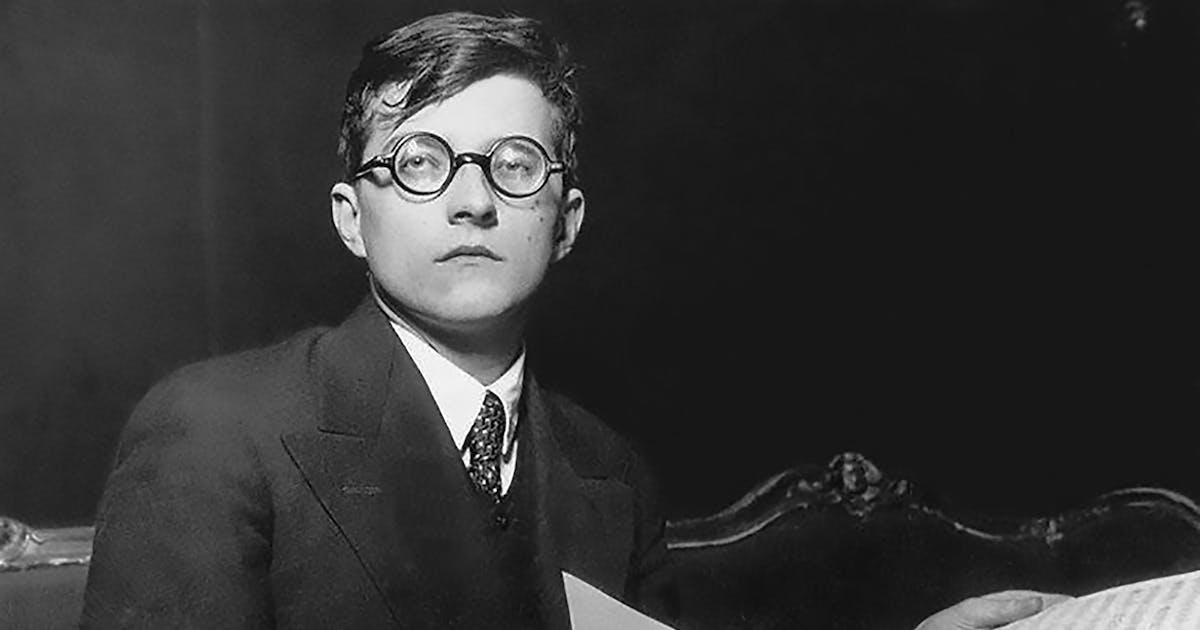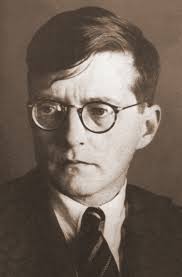Dmitri Shostakovich, a name synonymous with 20th-century classical music, left an indelible mark on the world with his deeply emotional and politically charged compositions. Born on September 25, 1906, in St. Petersburg, Russia, Shostakovich grew to become one of the most influential and controversial composers of his time. His life journey, filled with triumphs and tribulations, is as captivating as the symphonies and concertos that flowed from his creative mind.
Early Life and Musical Beginnings:
From a young age, Shostakovich displayed exceptional talent and a profound love for music. He began piano lessons at the age of nine, and his extraordinary musical abilities were soon recognized. At just 13 years old, he entered the Petrograd Conservatory and studied under esteemed composer Alexander Glazunov.
During his conservatory years, Shostakovich honed his skills and experimented with composition. His graduation piece, the First Symphony, marked the beginning of his journey as a symphonic composer. The work impressed critics and audiences alike, earning him widespread recognition.
Rise to Prominence:
Shostakovich’s ascent to fame was swift. His compositions, characterized by a unique blend of traditional and innovative elements, resonated with listeners and reflected the tumultuous times in which he lived. The Second Symphony, titled “To October,” celebrated the tenth anniversary of the October Revolution and solidified Shostakovich’s reputation as a young Soviet prodigy.
Throughout the 1930s, Shostakovich continued to compose groundbreaking works, including his popular Fifth Symphony. However, his artistic success was juxtaposed with mounting political pressure. The Stalinist regime, known for its strict control over the arts, demanded conformity and loyalty from artists. Shostakovich found himself walking a tightrope, trying to balance his artistic integrity with the demands of a totalitarian regime.
The Shostakovich Conundrum:
The 1936 premiere of Shostakovich’s opera, “Lady Macbeth of the Mtsensk District,” was met with both critical acclaim and censure. Joseph Stalin attended one of the performances and reportedly left unimpressed. Shortly after, Pravda, the official newspaper of the Communist Party, published a scathing article denouncing the opera as “muddle instead of music.”
The article marked the beginning of a tumultuous relationship between Shostakovich and the Soviet government. Fearful for his life and livelihood, Shostakovich adapted his composition style to appease the authorities. However, beneath the seemingly conformist surface, his music often contained hidden layers of dissent and critique. Pieces like the Fourth Symphony were withheld from performance due to their perceived subversive nature.
World War II and Later Works:
The outbreak of World War II brought immense challenges for Shostakovich and his fellow countrymen. He witnessed the siege of Leningrad, enduring starvation and destruction. During this period, he composed his monumental Seventh Symphony, also known as the “Leningrad Symphony,” which became a symbol of resistance and resilience.
As the war came to an end, Shostakovich continued to explore new artistic avenues. His string quartets, such as the Eighth and Fifteenth, delved into deep introspection and existential themes. These works showcased his mastery of musical form and his ability to convey profound emotions through intricate composition.
Legacy and Impact:
Dmitri Shostakovich’s contributions to classical music are immeasurable. His symphonies, chamber music, and operas have left an indelible mark on the repertoire, captivating audiences worldwide. While his music reflects the pain and suffering of his era, it also contains moments of profound beauty, hope, and resilience.
Shostakovich’s legacy extends beyond his compositions. He inspired countless musicians and composers who came after him, shaping the course of classical music history. His ability to navigate the treacherous waters of political oppression while maintaining artistic integrity serves as a testament to his unwavering spirit and devotion to his craft.
Conclusion:
Dmitri Shostakovich’s life was a symphony in itself, filled with soaring melodies and dissonant chords. Through his compositions, he defied the oppressive forces of his time and expressed the universal human experience. His works continue to resonate with audiences, reminding us of the power of music to transcend political boundaries and touch the deepest parts of our souls. Dmitri Shostakovich, a true maestro of the 20th century, will forever be remembered as a composer who dared to challenge the status quo and gave voice to the voiceless through his timeless melodies.


Comments are closed